
Ultimate Guide to Buying Wedding Bands
Wedding Bands Buying Guide

A hush falls over the crowd. You slowly take hold of the ring, slide it onto your love’s finger and you’re now cemented together ‘til death do you part.
Wedding bands hold major significance — not only during your ceremony, but for the rest of you and your new spouse’s lives. They’re symbolic, but they’re also fashion accessories meant to be worn every single day, so it’s important to choose the right band for the right person.
Here’s an insider’s guide to wedding bands, including styles, stones and other factors to consider.
Plain Metal Bands
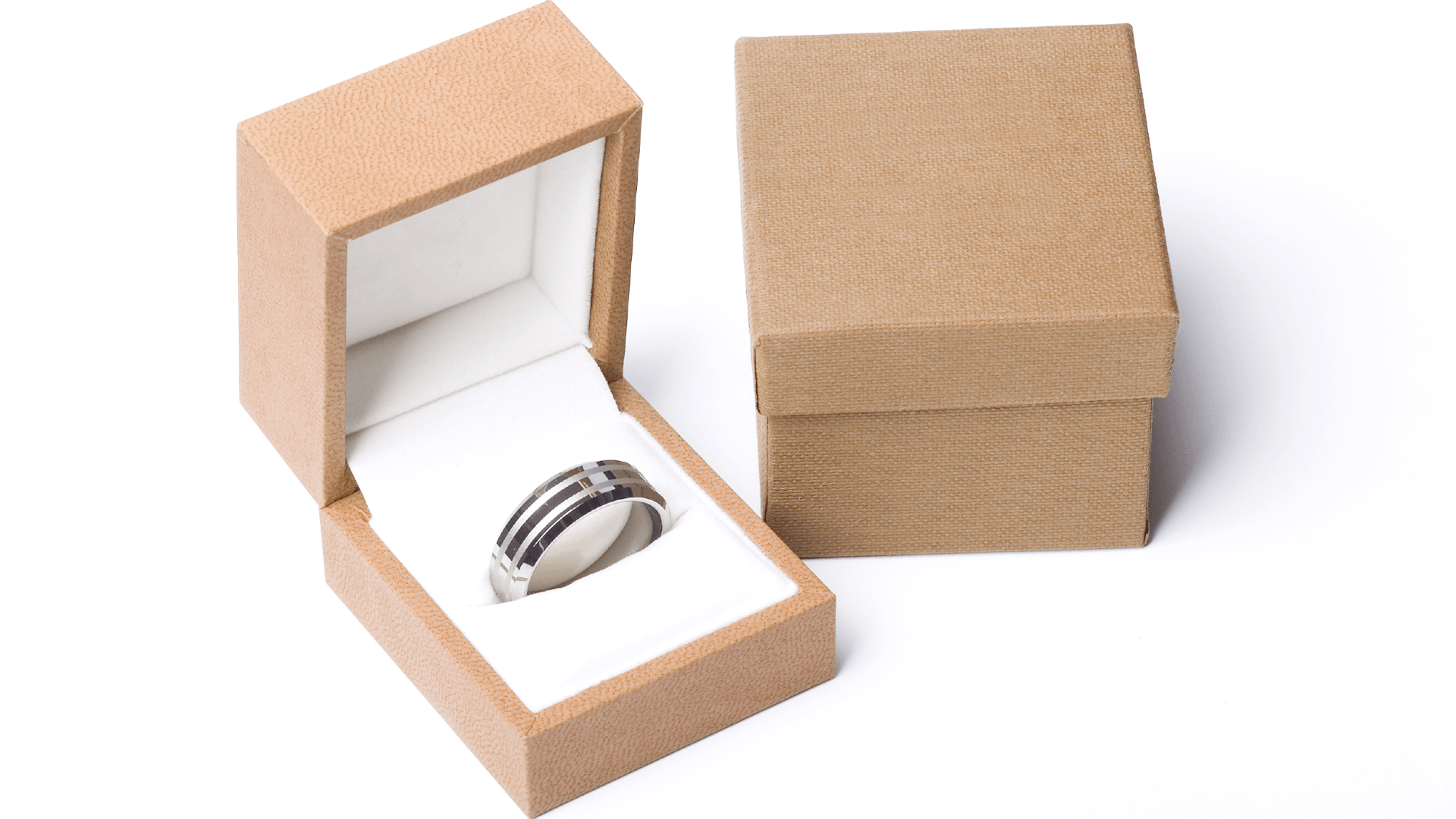
One of the most common wedding options is a plain metal band. In this case, “plain” means without any stones, but just because you’re skipping the diamonds doesn’t mean your band has to be boring. There are so many ways to customize a plain metal band, starting with the type of metal you choose.
- Yellow gold: Yellow gold is by far the most popular metal used in wedding bands. Pure gold is 24 karats, but 24K gold is far too soft for everyday jewelry like a ring. Instead, jewelers blend gold with metals like copper, silver and nickel to make alloys that are stronger. Many people choose 14K gold for their bands because it offers a good balance between quality and durability.
- White gold: White gold is an alloy containing metals like palladium or silver that gives the gold a lighter, whiter sheen. White gold bands are often also coated with rhodium plating to add to the white finish. As a bonus, rhodium is hypoallergenic, which can help protect the wearer from reactions to other metals in the gold alloy, such as nickel, that are known to cause sensitivities. White gold is an attractive choice and offers the look of platinum for far less investment, but the rhodium plating has to be replaced periodically to maintain the color and stability of the ring.
- Titanium: Titanium is the strongest and most durable metal used to make wedding bands. Its tell-tale silver-gray hue is particularly popular with men who want a non-traditional option for their rings, and the metal is surprisingly lightweight and even hypoallergenic for comfortable everyday wear. But all that durability and corrosion-resistance comes at a cost. Because titanium is so strong, it is extremely difficult to size, and you won’t be able to adjust a ring after you’ve purchased it.
- Platinum: Platinum is an increasingly popular choice for wedding bands, largely because of its signature lustrous white coloring but also because it’s remarkably durable. Platinum rings are resistant to corrosion and wear and tear, meaning they’ll hold up well over time. Plus, they’re hypoallergenic and suitable for those with metal sensitivities. The drawback? All those perks come with a hefty price tag. The relative scarcity of platinum and its multitude of benefits means it’s usually significantly more expensive than gold.
- Palladium: Think of palladium as platinum’s more affordable cousin. It shares a similar white hue, won’t tarnish or require replating (unlike white gold) and is quite durable.
- Silver: Silver is a shiny, whitish metal used to create all kinds of jewelry. Because silver is naturally soft and malleable, it’s easy to mine and work with. Combine that with abundant availability, and silver is easily the most affordable metal option for rings. Unfortunately, silver is prone to tarnish and can quickly accumulate scratches and dents. To keep a silver wedding band looking great, you’ll need to maintain it regularly with routine polishing.
Widths
Wedding bands come in various widths. For women, the most common widths are 2mm, 3mm and 4mm. Men’s rings are wider, with common widths ranging from 4mm to 7mm. Some people put little to no thought into the width of their ring, but a few millimeters can make a huge difference in terms of fit and aesthetics.
Here are a few things to consider when comparing widths:
- Wider rings will have a tighter fit than a narrow ring, so two rings that are the same size but have different widths will not fit the same
- Choosing a wedding band with a smaller width is an easy way to balance out a larger, statement-making engagement ring
- Slimmer bands are often the most complementary choice for more petite hands while larger bone structures call for a wider ring for a harmonious look and feel
- Wider bands are easier to manipulate and customize if you want to add engraving, inlay or other embellishments
- A wider band may be more comfortable for individuals with arthritis or other issues that affect mobility in the hands and/or fingers
Finish options
Each metal used in a wedding band has its own innate properties that help determine how the ring will look and feel, but applying different finishes can change the ring’s appearance too.
- High-polish: Just as the name suggests, a high-polished finish gives wedding bands a super shiny, super reflective surface that’s almost mirror-like. All that shine is sure to attract attention, but it also attracts (and displays) scratches and dents.
- Satin: A satin finish offers the smooth feel of a high-polished ring without the highly reflective surface. It’s a little less flashy but still elegant and timeless.
- Hammer-finished: Hammer-finished rings offer tons of texture thanks to a dimpled surface that looks like it was beaten then polished. This finish is a little more outside the box and is particularly popular amongst men who want something that feels more rugged and is less likely to show wear and tear.
- Sandblasted: Sandblasted is perfect for anyone who appreciates a tactile experience. Unlike the smooth surfaces offered by satin and high-polished finishes, sandblasted rings feel coarse and grainy, like a more refined take on sandpaper, yet still feel comfortable enough for daily wear.
- Matte: Matte rings feel sleek and smooth but ditch the reflective surface in favor of a surface that’s polished then abraded to keep the ring from being too shiny.
- Stone finish: One of the most interesting options, a stone finish adds a rock-like texture and appearance to the ring that easily hides smaller dings and scratches. Someone who works with their hands a lot or is generally hard on their jewelry might appreciate the benefits of a stone-finished band.
Special Styles
Plain bands may not have gemstones to give them that extra pizazz, but there are other design techniques that can turn even the most ordinary ring into something extraordinary.
- Plain: A “plain” wedding band has a level surface that’s smooth and even all the way around.
- Milgrain edge: Wedding bands with a milgrain edge have tiny beads of metal forming a border around the perimeter of the ring. This simple yet stunning embellishment has its roots in ancient Asia, but milgrain surged in popularity during the 1930s when jewelers were eager for ways to make their creations more ornate.
- Knife edge: If you’re looking for a band with a sharp, modern look, you’ll likely love a knife-edged band. Knife-edge rings feature angled edges that rise up to a peak in the middle of the ring. This design is great for contemporary couples who want a ring that’s visually interesting without incorporating stones or other more finicky embellishments.
- Diamond cut: You’ve decided to skip having diamonds on your wedding band, but what about diamond cuts? These little notches are etched directly into the metal, creating a pattern that exudes an understated sparkle suitable for both men and women.
- Antique style: Antique-style wedding bands aren’t a single type of design but rather cover an entire category of rings that use vintage-inspired details like filigree, ornate engravings, twisted shanks, scrollwork and beaded mosaics.
Diamond Wedding Bands
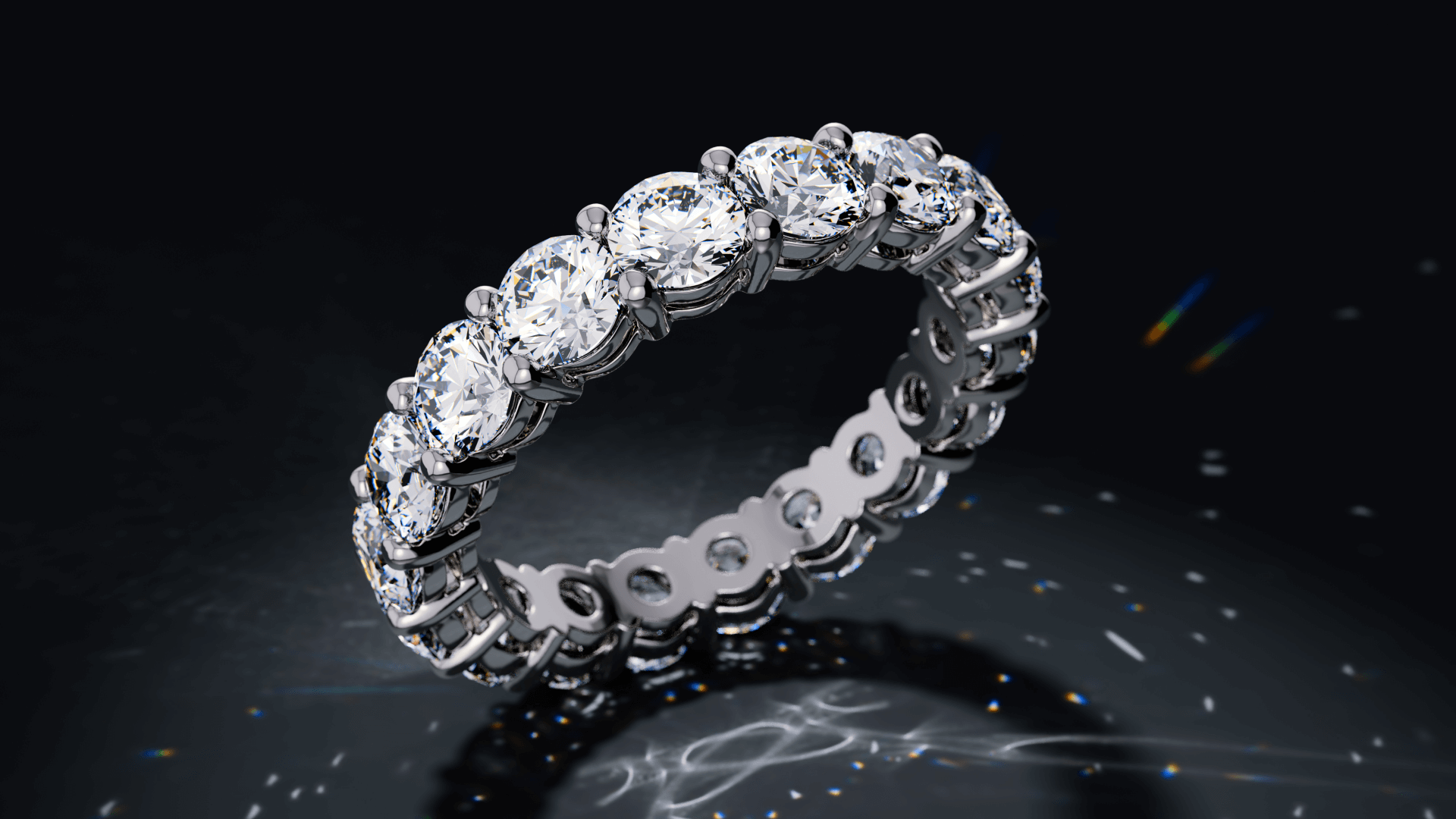
Diamond wedding bands are an extremely popular choice for women, and it’s easy to see why. Sliding on a diamond band next to an engagement ring that boasts its own collection of gemstones means extra sparkle and attention. As you shop for your diamond wedding band, keep an eye out for these four common styles:
- Eternity bands: Eternity bands feature a never-ending ring of gemstones (often diamonds)which circle all the way around the band. The fact that there is no beginning or end to the stones symbolizes love and the permanence of marriage.
- Semi- or half-eternity: A semi- or half-eternity band is similar to an eternity band except the stones only go part way around the ring. This is often due to price (fewer gemstones equals a lower cost) or comfort (eternity bands are designed for everyday wear but some people are sensitive to the feel of the stones on the palm-side of their hand).
- Three-stone: Three-stone rings feature a center stone flanked by two additional stones. Often, the center stone takes prominence while the accent stones are smaller and may even be a different type of stone. One popular configuration includes a diamond center stone flanked by two colored gemstones representing the bride’s birthstone.
- Five-stone: Five-stone rings are the same as three-stone rings just with two more diamonds or other gemstones.
Men’s Wedding Bands
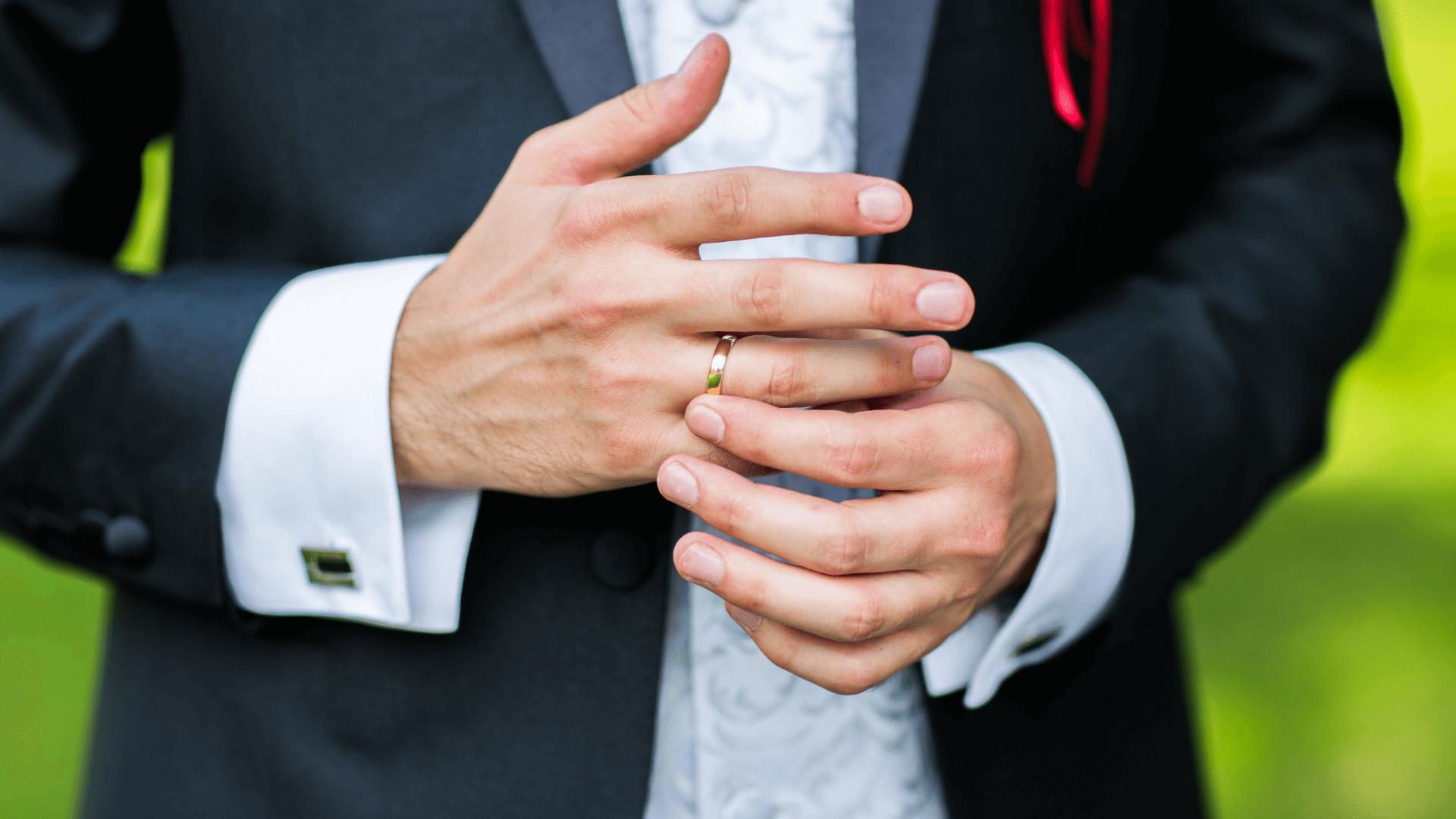
With so much emphasis on engagement rings designed solely for the bride, it’s no wonder men’s wedding bands are often an afterthought. But that’s a mistake — you’re going to be wearing this ring every day for the rest of your life. It deserves some consideration.
Men’s wedding bands carry many of the same design elements as women’s rings. The types of metals, finishes and even embellishments are identical, but how they’re executed can be just different enough to suit a more masculine aesthetic.
Metals
Men’s wedding bands can be made in all the same metals available to women, including:
- Yellow gold
- White gold
- Platinum
- Palladium
- Titanium
- Silver
The same pros and cons apply here, too. The strongest, most durable metals are platinum, palladium and titanium, but those options all come with higher price tags. Silver is the most affordable option, but it’s also the choice that requires the highest maintenance — if you choose a silver wedding band, expect to polish it regularly in order to manage the inevitable tarnish, nicks and scratches that will come your way.
Yellow and white gold are the two most popular choices because they straddle the line between affordability and durability. Both give off a classic vibe but can also be styled to match a modern aesthetic if you favor a contemporary wardrobe or wear signature jewelry that’s more contemporary in style.
Keep in mind, too, that you can always design a ring that mixes metals. This may be a good option if you like one metal but your fiancée has chosen a ring that uses another material. Mixing your choice and hers is symbolic, as it combines both your tastes and makes the set seem like it matches while also allowing you to each have your own bit of flair.
Width
As discussed above, men’s wedding rings are generally thicker than women’s, averaging between 4mm and 7mm. A thicker design suits a longer, wider hand and allows for ornamentation that won’t take up the entire width of the ring. A thicker band also makes a statement. While a thin gold band might feel too delicate for a man’s hand, a wide titanium band or squared-off platinum band strikes the right balance between elegant and strong.
Finishes
Men’s wedding bands have all the same finish options as women’s wedding bands, including:
- High polish
- Matte
- Hammered
- Satin
- Sandblasted
- Stone-finished
One unique aspect of men’s rings is the higher frequency of mixed finishes. Some men choose a ring that might be sandblasted through the middle of the ring but high-polished on the edges and sides. Another attractive option is a ring that mixes polished and matte finishes for a hint of that highly reflective surfacing without being overtly shiny.
Special Styles
You may not see delicate detailing like milgrain on men’s rings, but there are other options that are equally interesting. Modern designs might feature a vertical stripe of contrasting material that crosses the face of the ring or a trio of gemstones creating a subtle line down the center of the band.
Engraving allows for endless personalization. You can go with a more traditional approach and add your monogram (yours or both yours and your sweetheart’s) on the underside of the ring, or you can try a more creative take that includes your fiancée’s fingerprint etched into the metal.
From braided bands to chain-inspired rings with a diamond embedded in each link, there are so many ways to turn an otherwise simple men’s wedding band into a memorable, fashion-forward piece of jewelry you or your future spouse will love wearing each and every day.
Choosing Your Wedding Band
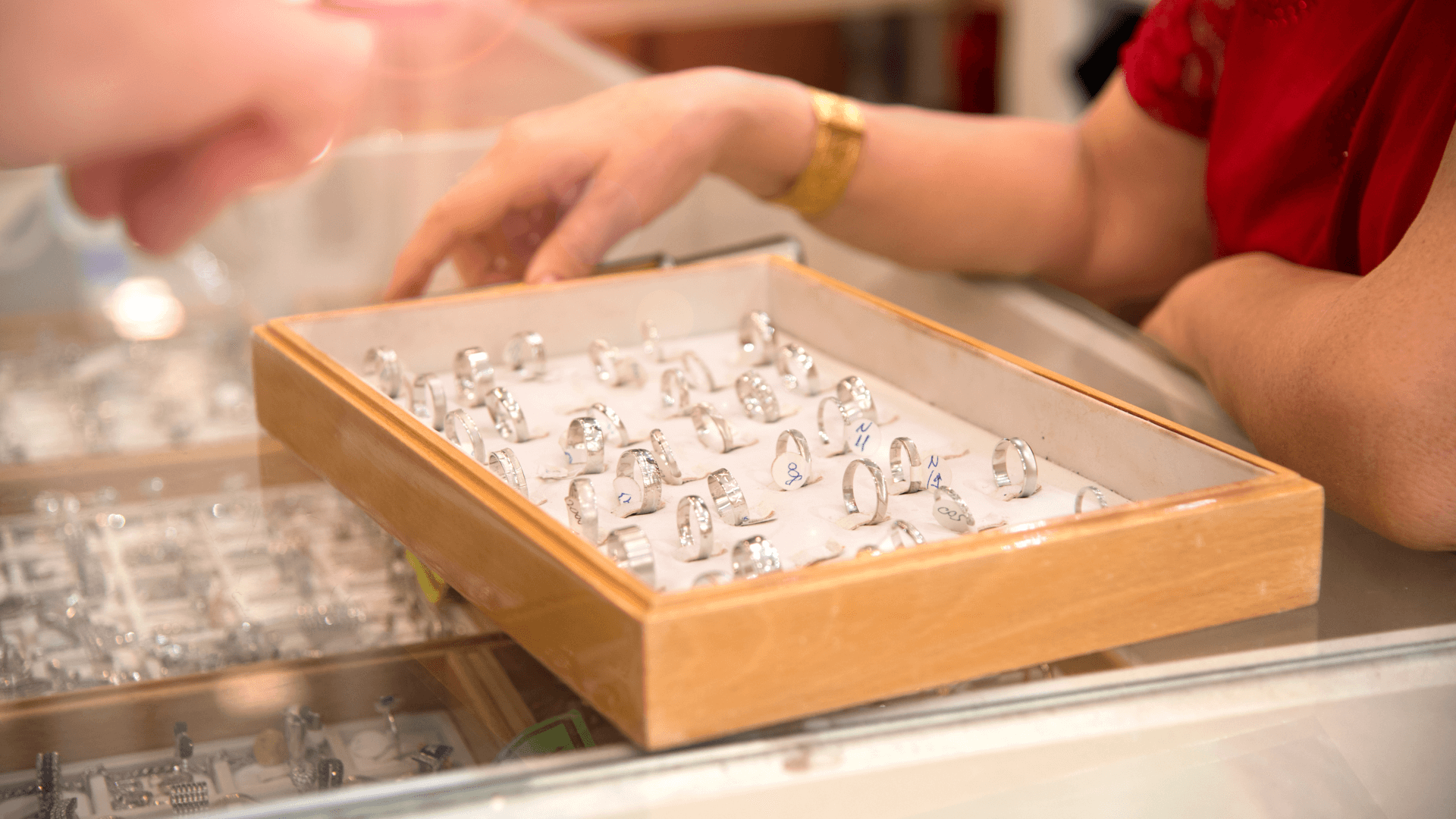
Though it’s tempting to choose a wedding band simply according to how it looks, there are more factors to consider before you plunk down your credit card and call it a day.
For starters, consider how the ring is to be worn. For women, it’s traditional to wear your wedding band under your engagement band on the fourth finger of your left hand — that means wearing your wedding band closer to your heart with your engagement ring on the outside. (Men wear their wedding band the same way, minus the engagement ring.) Most people prefer these two rings to sit flush side by side, meaning they essentially nest together. But this only works if you choose a wedding band that complements your engagement ring.
If your engagement ring features an oversized stone or ornate band, you may need to choose a simpler band with a slimmer width to complement the jewelry you already have. An even better idea is to buy your engagement and wedding rings as a matching bridal set. Buying both at the same time, and from the same designer or jeweler, ensures the two rings will look great together and fit comfortably without any thought or extra effort on your part.

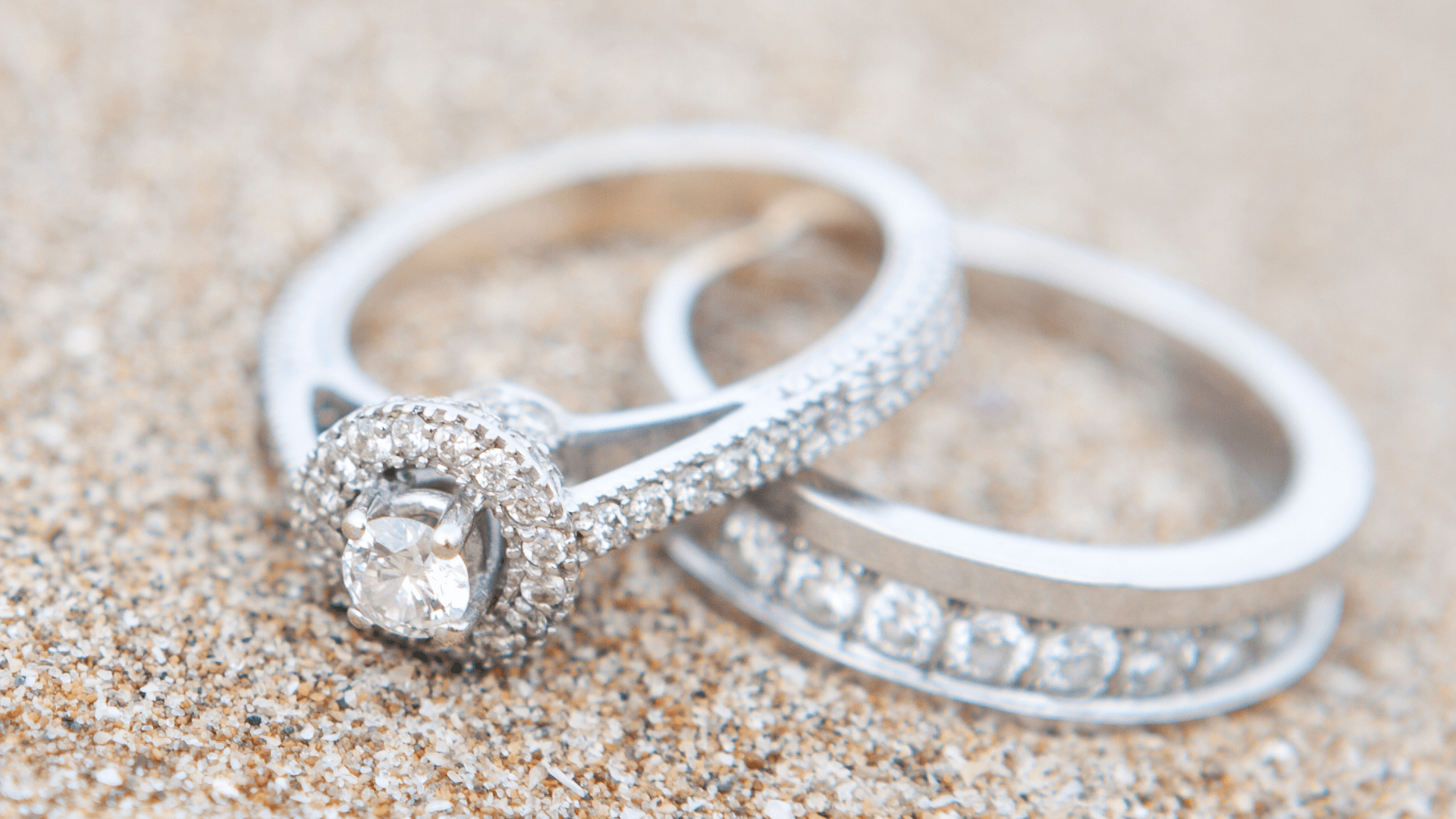

POST COMMENT